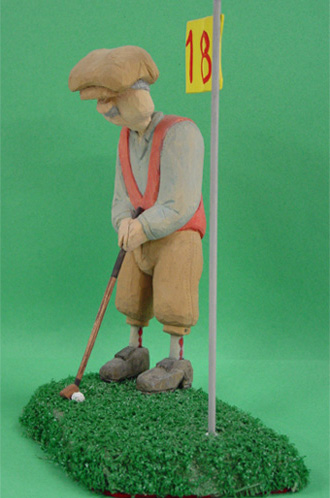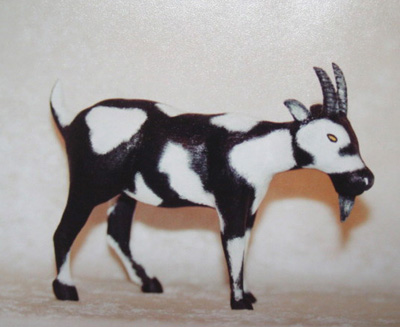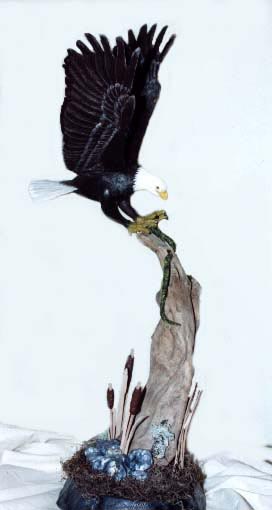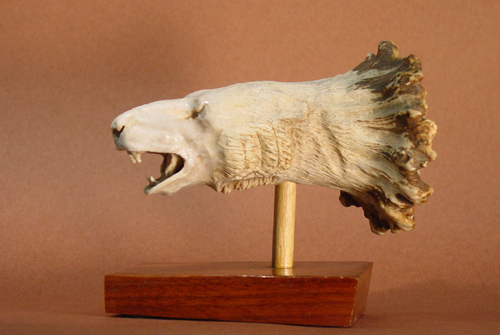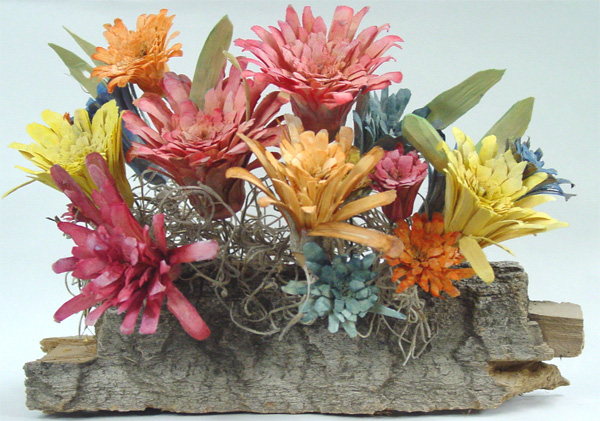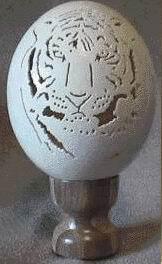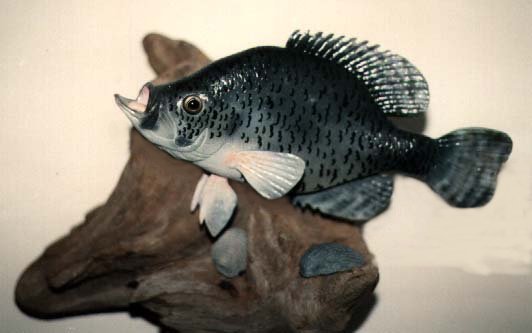
“For me, carving loses the world,” explained Cathy Krumrei when describing her woodworking hobby niche. “When I start to carve, I don’t think of anything around me except the wood.” No doubt many of us can relate to that wonderful feeling of immersing ourselves in woodworking, but that pleasure has not been part of Cathy’s life all that long. In fact, it’s only been a little more than a decade since she took up chisel and mallet and launched into a new endeavor.
“Prior to 1996, I had never done any woodworking whatsoever,” she recounted. “That year, a friend whose father got into wood carving introduced me to it. One day when I was visiting, I looked at what he was doing and thought, ‘Hey, I could do that.’ I took a couple of classes, one on caricatures and fish, and one on birds, and I was off and running.
“The first carving I did was a caricature of a golfer, because that year my husband had just taken up golf. It started out about 12 inches tall but kept getting smaller and smaller as I tried to correct it. My teacher wanted me to abandon it and start over, but I was adamant. Even though it ended up smaller than I had originally intended, I worked on it until I was satisfied with it. To this day, I’ve never started a carving that I didn’t finish.
“After that, I turned my attention to carving fish, because I am into fishing. I made about 10 crappies for customers, mostly friends who were into sport fishing. I made a sunfish for my son that was realistic enough that he thought it was mounted taxidermy instead of a carving. It’s hard for me to paint on wood because I don’t like to destroy the beauty of the wood grain, but in some cases it enhances the carving, as with the fish. Otherwise, I try to use paint sparingly, often only coloring certain elements to bring them out without destroying the overall feel of carved wood.
“My ducks, for example, remain unpainted. That’s because once they are carved, they look as if they feel soft, and you want to touch them. Painting would change that soft look. Interestingly, leaving duck decoys unpainted brings with it its own challenge. Ducks are generally done in two pieces, with the head added separately. Hiding that neck joint is fairly easy with paint, but making it disappear in an unpainted piece is quite difficult.”
Most of Cathy’s work reflects her love of nature, with fish, birds and animals making up a good share of her output. In fact, it was an animal carving that helped coax her across one significant threshold. “The elk carving was my first commissioned piece,” she told me. “It was requested by an elk hunter. After that came a goat, made for a woman who raises goats. She gave it to her husband as a gift, and he thought it was a molded plastic model. He did not realize it was hand carved.
“At one point, I took a class on carving antlers and did a polar bear from an antler stub. After that, people starting bringing me antlers to carve. I eventually did about half a dozen or so before going back to wood. With wood, I stick to gouges and knives, but when carving antlers, I have to resort to power tools and carving burrs. That’s because antlers are so hard. They are a lot of fun, but I like wood better, mostly because it lets me carve with chisels and knives instead of grinders.
“Around 2002, I took a class on how to carve on a green log, and chose to carve a face for my first attempt. The pattern I chose was one with only one eye because I was a bit fearful of carving eyes, and thought one would be easier than two. In retrospect, I should have done two, because I would have learned how to carve eyes better, or at least more quickly. It was a face that represents the spirit within the wood, with vines growing around it. Most of it was left unpainted, but the vines were painted for contrast and to enhance the effect of the face.
“I fell in love with log carving right away because it was a quick way to carve that gave me a connection between tool and wood. Also, there is no dust created when you carve green wood with mallet and chisels. My sister and I are into birds, so when the class was over, I decided to turn some of my carved logs into birdhouses. I sent a picture of one of my birdhouse logs with a face carved into it to a magazine dedicated to bird lovers. They ran the picture, and before I knew it, orders starting coming in. Before long, I’d made and sold about 30 carved birdhouse logs. It was a natural progression to do a butterfly house next, and sure enough, I have sold a few of those as well. Initially, I sold my work so that I could afford to buy more wood and tools, but lately it has started to become a business.
“Sometime around 2004, a friend directed me to a web site that showed how to carve wooden flowers. I started experimenting and ended up making seven different kinds of flowers, often copying them from pictures in magazines. In order to share what I’d learned with other carvers, I sat down and started writing how each was done. After speaking to another carver who had self-published a book, I realized I could do the same. I wrote a book called Forever Flowers and sold it online. After selling out a 100-copy print run, I realized it was more economical for both me and my customers to offer it as an online download. I currently sell it only that way.”
Clearly, Cathy is an artist looking for an outlet, and while wood may be her favored medium, it is not the only one. Poke around her web site a bit, and you’ll notice carved emu, goose and ostrich eggs tucked in among the antlers and wood. While many of her pieces reflect copious realism, several cross the line into artistic flights of fancy, and perhaps that is only partly within her control.
“In a sense, I never know exactly what I will end up with when I start,” Cathy admits. “I let the wood direct what comes out. Artists have a gift of seeing beyond what others see. Sometimes there is a gap between what you imagine and what you create, but eventually, it all falls into place.”
